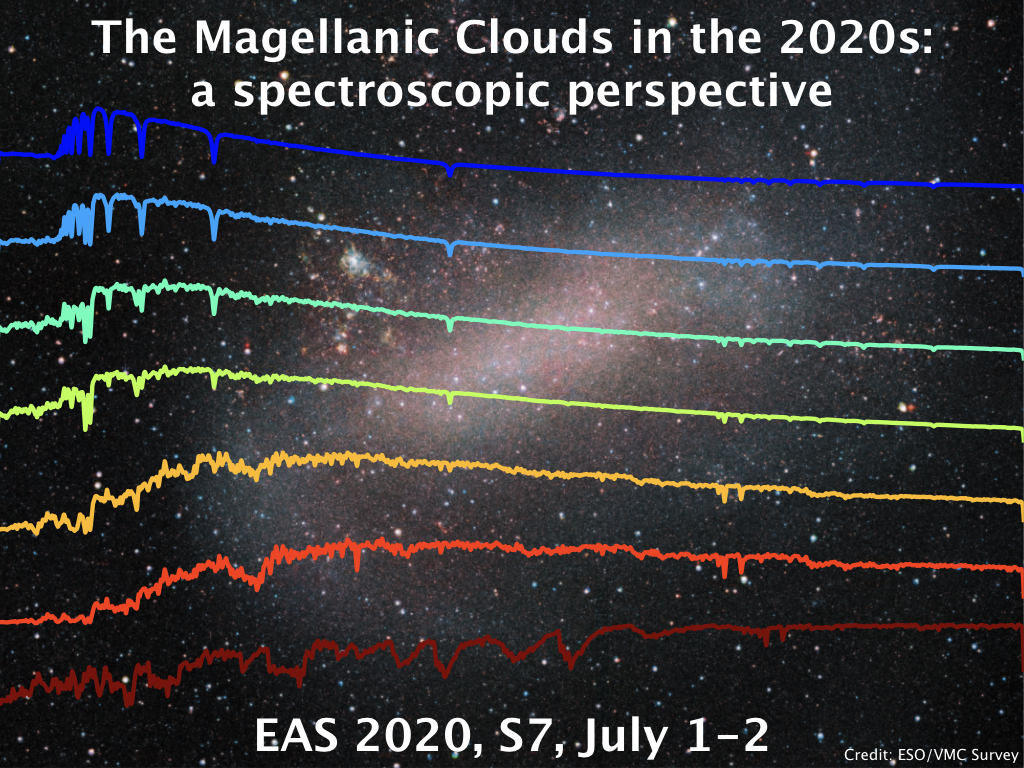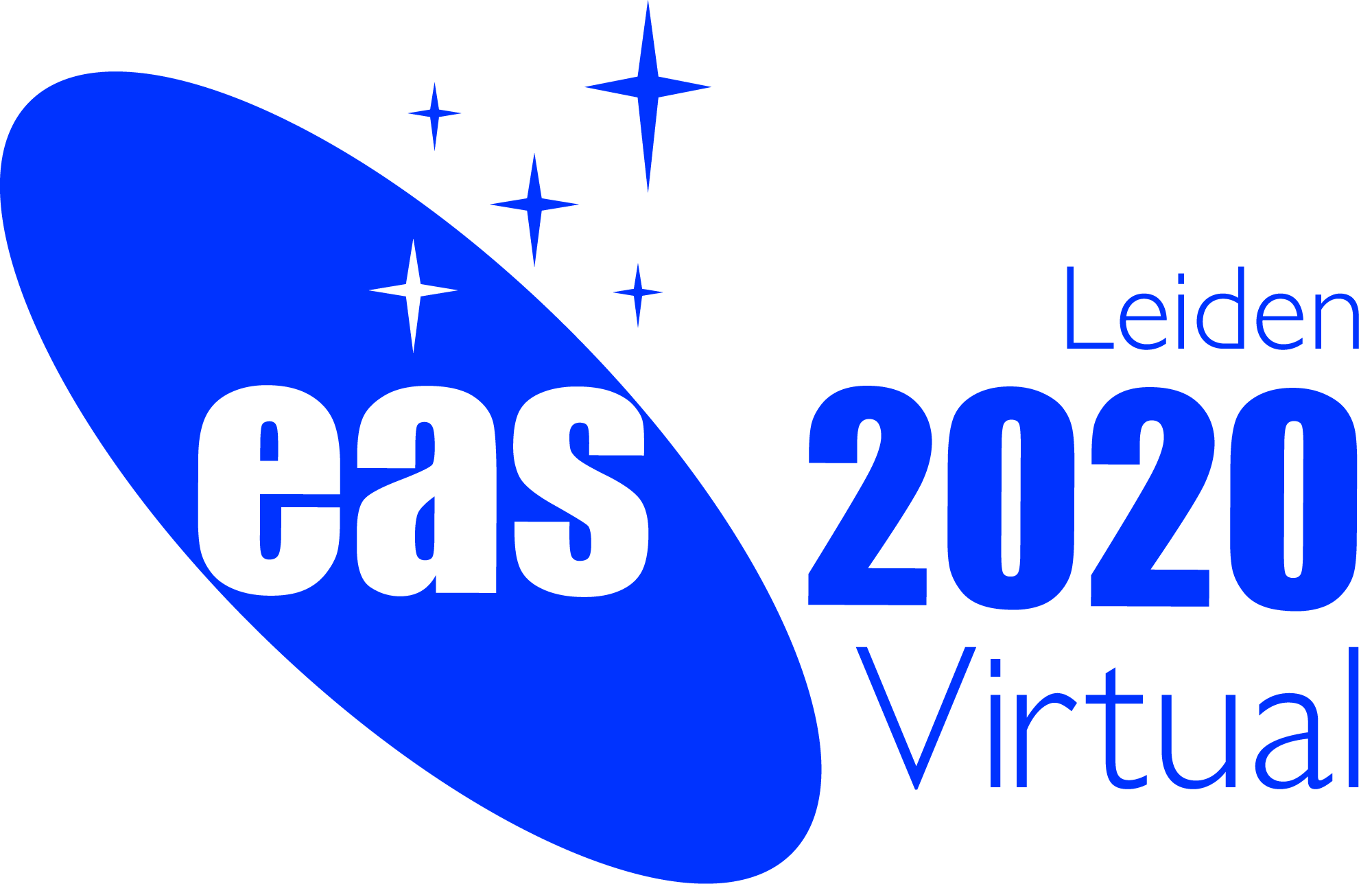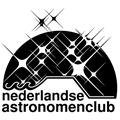Symposium S7
1 - 2 July 2020
The Magellanic Clouds in the 2020s: a spectroscopic perspective

Aims and scope
The Magellanic Clouds have long been instrumental in driving our understanding across many fields of astrophysics, ranging from their importance in a cosmological context and the determination of the Hubble constant to the study of astrophysical phenomena under different environmental conditions.
In the last decade we have discovered that the Magellanic Clouds have only recently entered the potential of the Milky Way. Furthermore, deep, wide-field panchromatic photometric surveys (including the VMC, SMASH and DES) have measured the distribution, ages and masses of the faintest stars, uncovering unmistakable signs of interactions between the Magellanic Clouds as well as identifying a host of ultra-faint dwarf satellite galaxies and stellar streams associated with the Clouds.
Whilst these data are still being exploited to explain the vast amounts of substructure observed in the Magellanic Clouds, there is currently a dearth of large-scale spectroscopic follow-up. With the advent of instruments such as 4MOST and MOONS, as well as continuing contributions from existing projects (such as APOGEE-S, MAGIC and MagES), this relative lack of spectroscopic data will be addressed, thereby completing our dynamical and chemical views of the Magellanic Clouds.
The aim of this symposium is to bring together observers and theorists within the community to coordinate our efforts and discuss how these ancillary data will further transform our understanding of this unique system. Which and what types of stars should we focus on? How should each survey focus their attentions? How would this spectroscopic data feed back into numerical simulations and star formation history determinations? What remains to be done post-4MOST and MOONS?
Programme
Topics to be discussed include:
- The Magellanic Clouds in context
- Evolution of stars and star clusters
- Kinematics and dynamics
- Star formation histories and chemistry
- Morphology and structure
- The Magellanic Clouds as a distance scale anchor
- Ongoing and future surveys
Invited speakers
- Joachim Bestenlehner (University of Sheffield, UK)
- Maria-Rosa Cioni (AIP, Germany)
- Denis Erkal (University of Surrey, UK)
- Guillaume Guiglion (AIP, Germany)
- Laura Inno (Parthenope University of Naples, Italy)
- Pascale Jablonka (EPFL, Switzerland)
- Sebastian Kamann (Liverpool John Moores University, UK)
- Sergey Koposov (Carnegie Mellon University, US)
- Alessio Mucciarelli (University of Bologna, Italy)
- Noelia Noël (University of Surrey, UK)
Scientific organisers
Cameron Bell (AIP, Germany)
Florian Niederhofer (AIP, Germany)
Dalal El Youssoufi (AIP, Germany)
Maria-Rosa Cioni (AIP, Germany)
Contact
Cameron Bell: cbell @ aip.de
Updated on Fri Nov 29 15:33:37 CET 2019
|

 A power cut will shut down all EAS services on Tuesday, 10 January 2017 starting at 7:30 CET.
A power cut will shut down all EAS services on Tuesday, 10 January 2017 starting at 7:30 CET.



